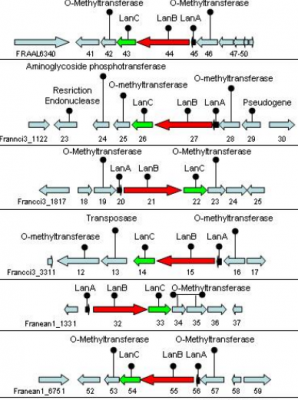

mansipan
-
Posts
18 -
Joined
-
Last visited
Content Type
Profiles
Forums
Events
Posts posted by mansipan
-
-
Thanks for the reply.
0 -
I have to use ATP solution daily and with time there is an increase in Pi in the solution, as observed by Malachite Green Reagent addition. Currently I am making 1 mM solution of ATP in 50 mM Tris HCl buffer pH 8.0 containing 50 mM NaCl and 5 mM MgSO4 and storing at 4 degree.
0 -
My concerns is, If DNA gives absorption at 260 nm and protein at 280 nm, then why colorimetric estimation is done for the nucleic acid and protein concentration determination, instead of just taking the OD at the respective lambda max and making the calculations
0 -
Hi there,
I am thinking about cloning an operon of size 4 kb, consisting of three genes, in pET28a vector, under the control of T7 promoter, is it possible? the genes are spaced by 32 and 89 bp respectively.
0 -
I'm a big fan of Geneious for my DNA editing needs- they have a free trial on their website.
But I am not able to draw diagrams with proper labelling with Geneious. I used paint but the output images have a resolution of 96 dpi. For publications i need to have diagrams with at least 300 dpi
0 -
it is usually a non-issue as the efficiency of the whole cloning experiments tends to be way lower than that of the mismatch rate. You have a slightly higher chance of creating some false products, but depending on how the designers are designed and how the cloning is going to proceed you will end up with the vast majority of the correct product for cloning. Since you have to run controls anyway, the probability of PCR purity being the culprit for failed cloning is very low.
There are exceptions however, e.g. if you do some tricky amplifications with very low yields. Salts or impurities themselves are no issue at all as you do a cleanup post-PCR,
Thanku very much
0 -
Please reply CharonY
0 -
For PCR its ok i know but i want to know for further cloning, whether one should go for purification of primers. Is it so that, desalted primer PCR amplified genes give problem in cloning.
Reference: Invitrogen
Cartridge, HPLC, and PAGE-purified oligos are best for the greatest efficiency. Since oligos are synthesized 3´ to 5´, incomplete oligos (n-x oligos) will be missing the 5´ sequence. It is important to use full-length oligos that have the 5´ sequence present, otherwise there will be a population of PCR products missing the sequence intended to be installed before PCR"
0 -
After designing a primer there are different purity grades available according to the purification protocols adopted like, desalting, reverse phase cartridge purification, RP-HPLC, AX-HPLC, PAGE and Gel filtration. my question is how much purity or which purification procedure of primers is good enough for amplifying a gene for cloning purpose.
0 -
Thank you very much
0 -
-
During my research i came across a peptide* in a research article# which is surprisingly stable to proteolytic enzymes with normal amino acids. Its an antimicrobial peptide which is resistant to the proteolytic enzymes pepsin, trypsin, chymotrypsin, proteinase K and pronase and broad pH stability. How can this be possible that these enzyme are not able to act at their specific site even though no protecting group is present.* MACQCPDAISGWTHTDYQCHGLENKMYRHVYAICMNGTQVYCRTEWGSSC
0 -
Thank for the nice and prompt reply.
Thank for the nice and prompt reply.
0 -
I want to identify homology between two peptides. How this can be done?
0 -
Hi everyone
I'm a Ph.D. scholar in the field of microbial biochemistry and did my Masters in Biochemistry.
0 -
Thanku very much!
0 -
what are meroacids, i find the term used only in mycolic acid metabolism
0


How to make stable ATP solutions
in Biochemistry and Molecular Biology
Posted
I have made fresh ATP solution and stored at -20 C but still there is some colour with Malachite green, it may be that there is some phosphate in the powder itself? Thanks for replying